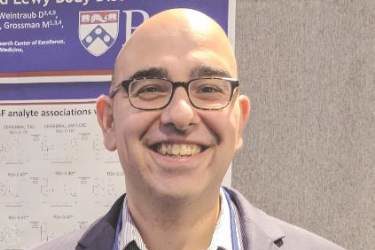FROM JOURNAL OF SUBSTANCE ABUSE TREATMENT
Most participants in a needle-exchange program reported that they abused buprenorphine and wanted treatment to help them quit but didn’t know where to get treatment, according to a report published online in the Journal of Substance Abuse Treatment.
This finding emphasizes the importance of policies to secure access to treatment. Outreach and education efforts also are important “to link marginalized people who use drugs to buprenorphine treatment providers,” said Dr. Aaron D. Fox of Albert Einstein College and Montefiore Medical Center, New York, and his associates.
Buprenorphine maintenance therapy (BMT) is effective against opioid addiction but is underused. Until now, most studies of the barriers to BMT use have focused on the difficulties that physicians or health systems have in providing it. Patients’ inability to access treatment, to pay for treatment, and other potential barriers have not been well investigated, Dr. Fox and his associates said (J. Subst. Abuse Treat. 2015;48:112-6 [ doi:10.1016/j.jsat.2014.07.015 ]).
They performed a cross-sectional study of the barriers to BMT use among people attending a single community-based harm reduction agency that provides syringe exchange and various social services “within an area of New York City that is severely impacted by drug use, HIV/AIDS, and hepatitis C.” The 102 study participants enrolled during a 6-week period, volunteering to complete a 25-minute computer-assisted self-interview in exchange for a small amount of cash as compensation.
Approximately half (57) of the participants said that they used illicit buprenorphine, confirming that the practice is widespread in this population.
Twenty-nine (51%) of those who abused buprenorphine said they were interested in initiating BMT. The most common reason they gave for failing to do so was they “did not know where to go to get treatment.” In New York City, “opioid treatment programs primarily offer methadone maintenance treatment and not BMT, so even experienced participants may not have known how to access BMT,” the investigators noted.
Very few of the respondents said that the cost of treatment, mistrust of doctors, or the stigma of attending a treatment facility presented barriers to access. Medicaid covers BMT in New York state, and almost all the study participants had Medicaid coverage. Thus, “relatively minor interventions addressing the barriers to BMT could dramatically improve treatment access,” Dr. Fox and his associates said.
Many of the study participants said they would readily participate if BMT were offered at a harm-reduction agency such as the one with their needle-exchange program. This offers a promising approach to improving BMT access, the researchers said.
“BMT may be prescribed in office-based settings, so directly initiating BMT onsite at harm reduction agencies may be a better option than referral to address the treatment gap,” they noted.
This study was limited in that the sample was drawn from a single community-based program in a large urban center. The findings may not be generalizable to other settings or geographic locations, Dr. Fox and his associates said.




